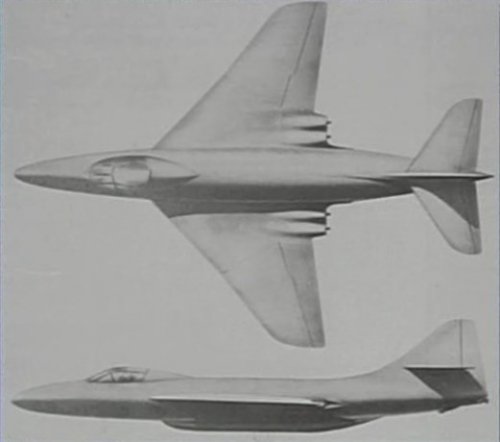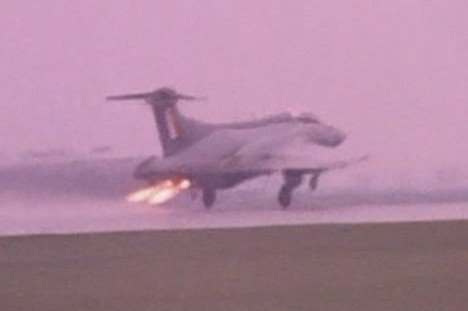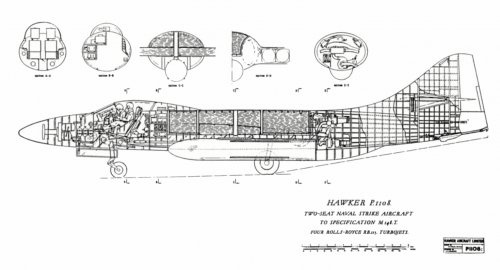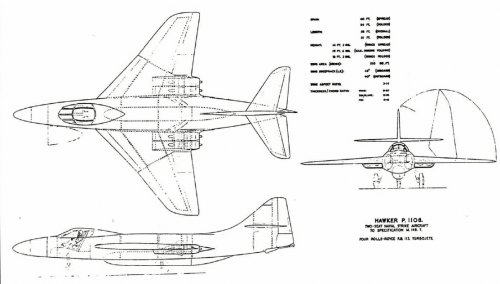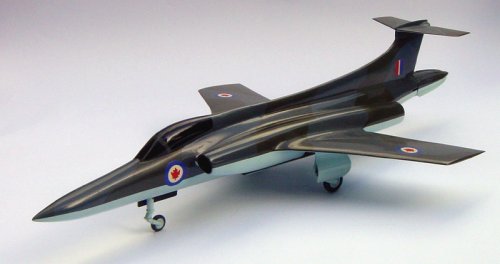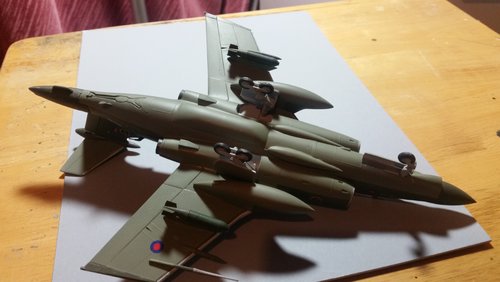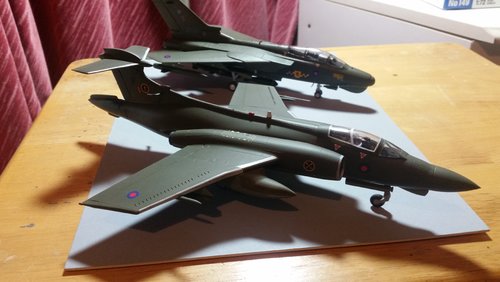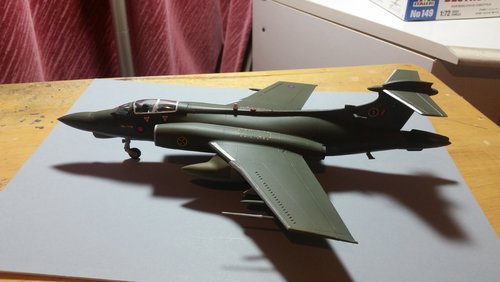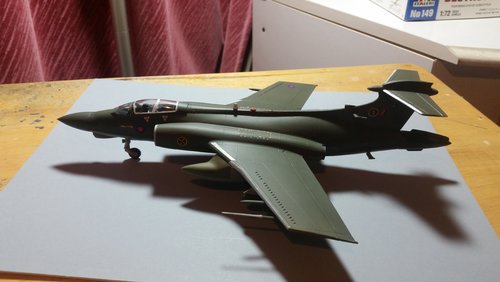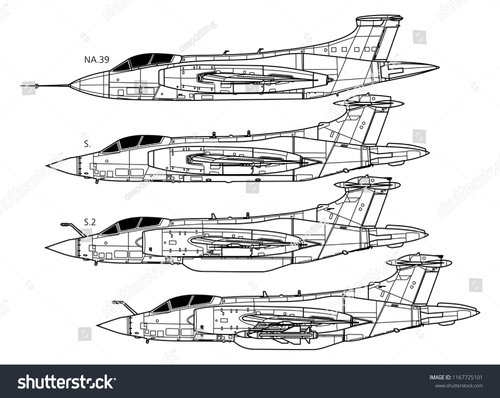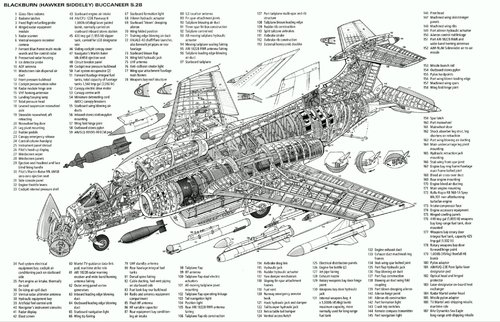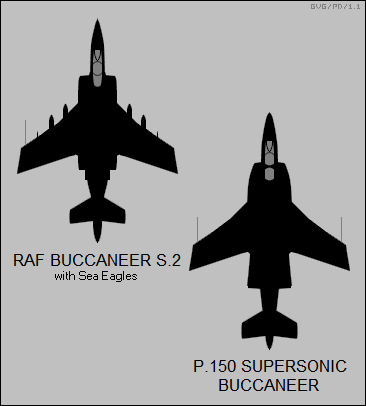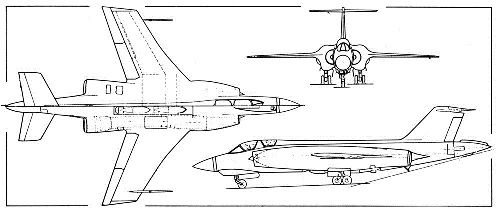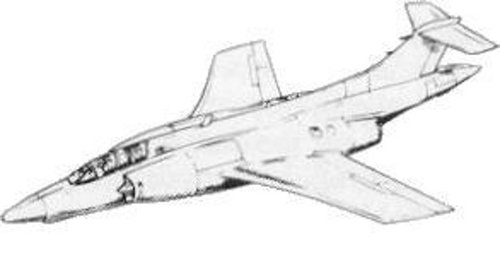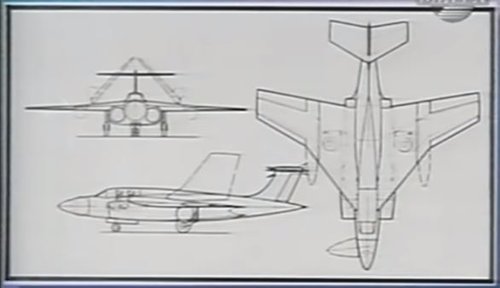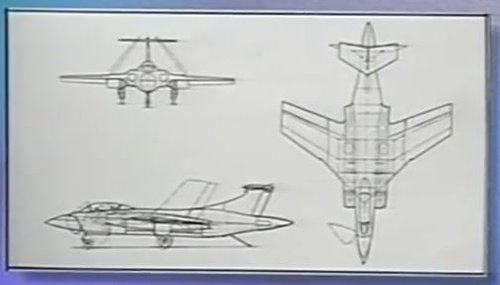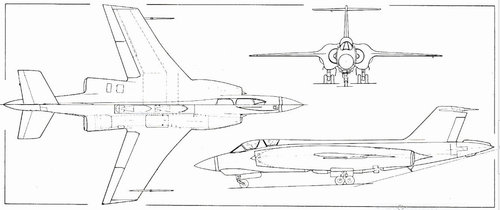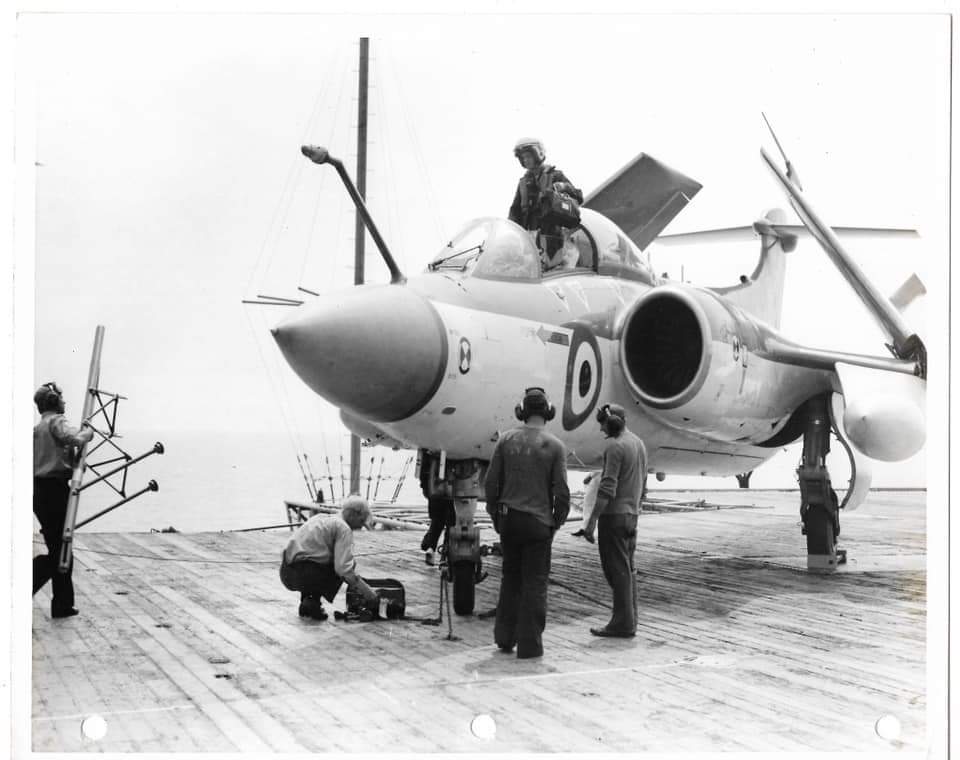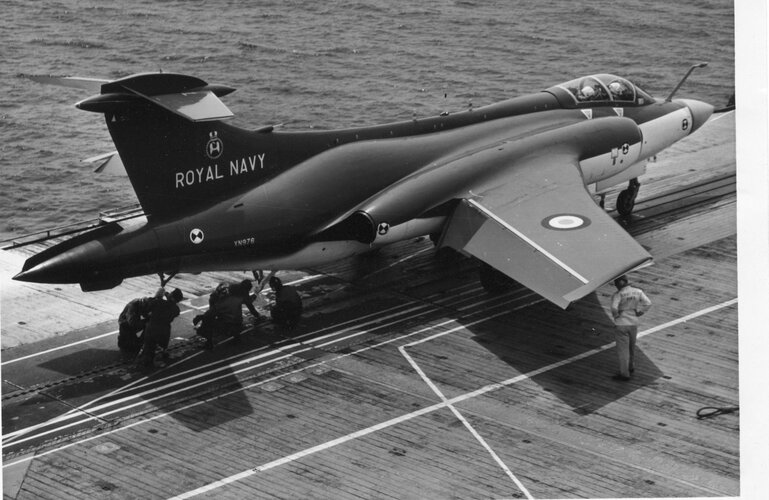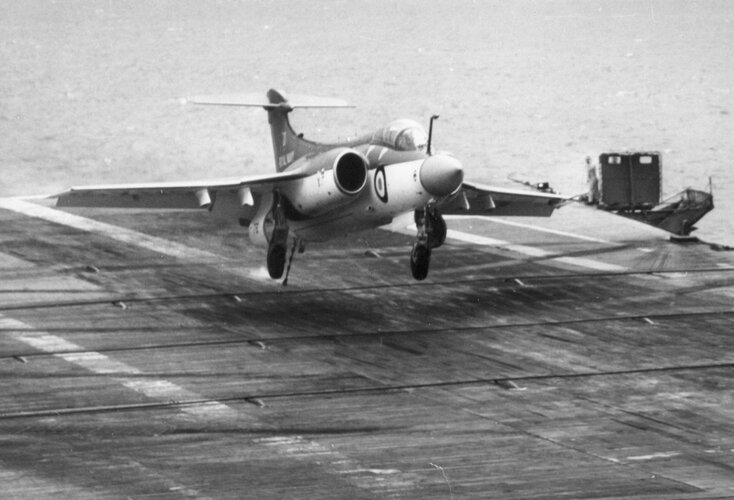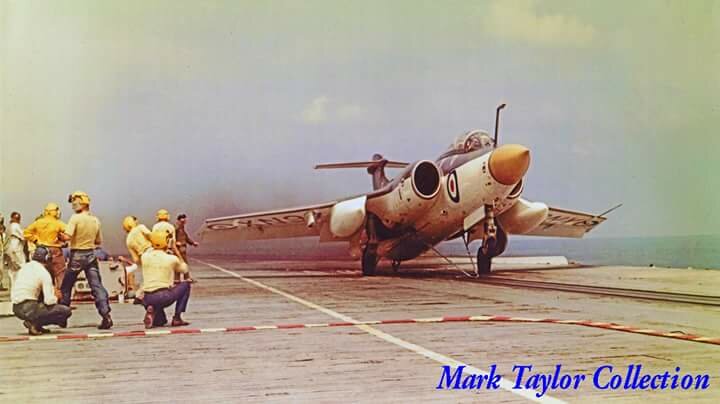You are using an out of date browser. It may not display this or other websites correctly.
You should upgrade or use an alternative browser.
You should upgrade or use an alternative browser.
Blackburn Buccaneer developments
- Thread starter wyvernhawk
- Start date
- Joined
- 28 November 2006
- Messages
- 699
- Reaction score
- 636
rousseau said:Here is a compitator of developing layout from Hawker P.1108 were supposed to be powered by four Avon engine.
The P.1108 was to have four Rolls-Royce RB.115 engines. Indeed there is rather little information on the engines available, but I doubt they have anything to do with the Avon.
Piotr
zen said:AWA had the better design within the terms of the tender, EE had the most potential for a exportable fighter with the P6 and with the -D a very interesting concept, Saro gave a good effort and again much potential.
Naturaly Bristol won for reasons even now I'm not that clear on....but I have my suspicions.
Intrigue and Infamy....
- Joined
- 20 January 2007
- Messages
- 892
- Reaction score
- 910
zen #31 - Bristol won (T.188) for reasons even now I'm not that clear on. PMN1, #35 - Intrigue and Infamy....
1953. RAE's perception for far/fast was stainless steel in Meteor-esque layout. In those days the job of industry was to perform to the MoS-piper's bidding. A proof-of-concept vehicle must precede award of a V-Bomber replacement, for which, logically, Avro/HP/Vickers would be preferred candidates. Previous such exercises had been placed with idle design teams (e.g: General did the crescent wing Attacker-for-Victor; BPA had done delta BP.111/120; later, Hunting did the jet flap H.126), knowing no assembly-line would come their way, but hoping for some structural sub-contracts. It would be a waste, fraught with conflict, to put Experiments in proper teams. A one-off called for just as much design effort as a job intended to be built en masse: MoS used them to suckle spare resources, just-in-case.
In 1953/54 Bristol was a design orphan, thus available. Zen noted EE and Saro, but both were well-loaded - Canberra enhancements, P1; sketchy IRBM work and the mixed-powerplant interceptor (to be S.R.53). The essence of (to be T.188) was not airframe scheming, ably assisted by RAE day trips down the A4, but was structure fabrication. All those Daniel Doncasters would pace that. HSAL's Avro was emerging as preferred source for (to be) Avro 730, so HSAL's AWA (busy on other HSAL jobs - ASM/Hunters, NF Meteors, Sea Hawk, Javelin) was imposed onto Bristol, to do the wing. RAE Bedford would do the flying; Filton's job would be assembly, plus not a lot.
By April,1957 Avro 730 and other applications for DH Gyron Jr. had been chopped. Logically T.188 should also have expired, but RAE/MoS tucked it away in a vague "Aircraft Research" budget line, beneath Ministers' radar. VG Swallows, Jet Flap, perforated aerofoils, weird SST shapes also lurked there. All drifted, because no-one really cared. Ministers/Treasury might first have become aware of some of them, pirouetting in front of hospitality tents at SBAC Shows.
1953. RAE's perception for far/fast was stainless steel in Meteor-esque layout. In those days the job of industry was to perform to the MoS-piper's bidding. A proof-of-concept vehicle must precede award of a V-Bomber replacement, for which, logically, Avro/HP/Vickers would be preferred candidates. Previous such exercises had been placed with idle design teams (e.g: General did the crescent wing Attacker-for-Victor; BPA had done delta BP.111/120; later, Hunting did the jet flap H.126), knowing no assembly-line would come their way, but hoping for some structural sub-contracts. It would be a waste, fraught with conflict, to put Experiments in proper teams. A one-off called for just as much design effort as a job intended to be built en masse: MoS used them to suckle spare resources, just-in-case.
In 1953/54 Bristol was a design orphan, thus available. Zen noted EE and Saro, but both were well-loaded - Canberra enhancements, P1; sketchy IRBM work and the mixed-powerplant interceptor (to be S.R.53). The essence of (to be T.188) was not airframe scheming, ably assisted by RAE day trips down the A4, but was structure fabrication. All those Daniel Doncasters would pace that. HSAL's Avro was emerging as preferred source for (to be) Avro 730, so HSAL's AWA (busy on other HSAL jobs - ASM/Hunters, NF Meteors, Sea Hawk, Javelin) was imposed onto Bristol, to do the wing. RAE Bedford would do the flying; Filton's job would be assembly, plus not a lot.
By April,1957 Avro 730 and other applications for DH Gyron Jr. had been chopped. Logically T.188 should also have expired, but RAE/MoS tucked it away in a vague "Aircraft Research" budget line, beneath Ministers' radar. VG Swallows, Jet Flap, perforated aerofoils, weird SST shapes also lurked there. All drifted, because no-one really cared. Ministers/Treasury might first have become aware of some of them, pirouetting in front of hospitality tents at SBAC Shows.
Petrus said:rousseau said:Here is a compitator of developing layout from Hawker P.1108 were supposed to be powered by four Avon engine.
The P.1108 was to have four Rolls-Royce RB.115 engines. Indeed there is rather little information on the engines available, but I doubt they have anything to do with the Avon.
Piotr
May I invite your source?
- Joined
- 28 November 2006
- Messages
- 699
- Reaction score
- 636
rousseau said:Petrus said:The P.1108 was to have four Rolls-Royce RB.115 engines. Indeed there is rather little information on the engines available, but I doubt they have anything to do with the Avon.
Piotr
May I invite your source?
'British Secret Projects. Jet Bombers Since 1949' by Tony Buttler p. 67:
As Rolls-Royce had no suitable engine for a twin-powerplant configuration (...), the choice settled on a unit still on the drawing board, the small 20in (51cm) diameter RB.115. Four were placed in pairs under the inner wing.
'Buccaneer. The Story of the Last All-British Strike Aicraft' by Tim Laming p. 12:
The design [of the P.1108] featured no less than four RB.115 engines positioned under the inner wing (a preliminary design even featured six engines), and Rolls-Royce's John Fozard had great difficulty convincing Hawker taht the additional safety of four engines would be worth the direct trade-off against additional weight and complexity.
Also the RB.115 designation appears in some drawings of the P.1108 - take a look at what's been attached.
Piotr
Attachments
BlackBat242
OK, I changed my personal text ;)
- Joined
- 10 April 2013
- Messages
- 745
- Reaction score
- 1,792
TinWing said:The Medway, a JT8D equivalent, was indeed based on the earlier Conway, which more or less was the equivalent of the contemporary JT3D. Of course, the Spey didn't exactly have a commercial competitor from P&W, at least not one that made it to production.
The TF30 was virtually equal to the non-afterburning Spey in power, fuel consumption, & weight - but was slightly larger in diameter (42" vs 38") and length (125" vs 115"-118"). As it was originally designed as a subsonic engine* (like the Spey was), it would have been suitable for similar commercial use.
However, P&W had already created a turbofan version of the J52 (the JTD-8, first run in 1960), which (at 42.5"/123.5") was right at the TF30's diameter and length, and was also a little more powerful at the start (12,250lbf) and a lot more powerful in later versions (21,000lbf with a diameter of 49") than either.
This engine saw a lot of commercial success, as well as powering the SAAB Viggen (with inclusion of an afterburner), and powering ships and land power stations as the FT12.
* For the Douglas FD6 Missileer. It also powered the Vought A-7 Corsair II in the A/B/C variants, before a modified Spey was selected for the A-7D/E versions (TF41, jointly developed and produced by Allison and RR).
- Joined
- 27 December 2005
- Messages
- 16,413
- Reaction score
- 18,931
Petrus said:'Buccaneer. The Story of the Last All-British Strike Aicraft' by Tim Laming p. 12:
The design [of the P.1108] featured no less than four RB.115 engines positioned under the inner wing (a preliminary design even featured six engines), and Rolls-Royce's John Fozard had great difficulty convincing Hawker taht the additional safety of four engines would be worth the direct trade-off against additional weight and complexity.
Also the RB.115 designation appears in some drawings of the P.1108 - take a look at what's been attached.
Piotr
John Fozard worked at Hawker. He designed the Harrier. Bit of an error there from Mr Laming.
- Joined
- 21 May 2006
- Messages
- 2,702
- Reaction score
- 1,602
I've just stumbled across this model on another web page, and thought this would be the best place to post it!
Its a model of the 1958 unsolicited Blackburn B.109 strike-fighter proposal to the RCAF, with the following attached comments:
(Source: Article - http://www.aviationmodels-online.com/Featured_model9/Blackburn%20B109.htm
Model - Sir George Cox Collection)
Regards
Pioneer
Its a model of the 1958 unsolicited Blackburn B.109 strike-fighter proposal to the RCAF, with the following attached comments:
A model of a proposed development of the Buccaneer strike aircraft (which saw service initially with the Royal Navy and later the RAF) aimed at the Canadian Armed Forces. The B.109 was an unsolicited proposal made against a declared need for a new interceptor and strike aircraft. The aircraft was to be powered by two Rolls-Royce Avon RB.146 engines with reheat, to have a lengthened fuselage and non-folding wings with reduced outboard thickness : all of which combined to raise the top speed to Mach 1.65. The result was a good looking aircraft but the proposal aroused insufficient interest from the Canadians and no prototype was ever produced..
The model, which is in 1:48 scale and dates from 1959, is almost certainly a one-off, made in-house.
(Source: Article - http://www.aviationmodels-online.com/Featured_model9/Blackburn%20B109.htm
Model - Sir George Cox Collection)
Regards
Pioneer
Attachments
Vahe Demirjian
I really should change my personal text
- Joined
- 28 February 2013
- Messages
- 816
- Reaction score
- 539
There was also a supersonic Buccaneer project called the P.142 according to Appendix One of Tony Buttler's British Secret Projects: Jet Bombers Since 1949.
Last edited by a moderator:
- Joined
- 27 December 2005
- Messages
- 16,413
- Reaction score
- 18,931
Yes, and you forgot to mention the only piece of information we know, which is the date of 1965.
Which one?which could tell me something about the supersonic buccaneer?
apparition13
I really should change my personal text
- Joined
- 27 January 2017
- Messages
- 459
- Reaction score
- 769
Just because I got frustrated having to look things up in 'From Spitfire to Eurofighter' by Roy Boot everytime I had a question about Buccaneer variants, here's the list with short summaries (the book has more details) excluding the Tornado avionics testbed Buccaneer, which doesn't seem to have a B or P number:
B.103: design that led to the production version
S.1: Gyron Junior production version.
S.2: Spey production version.
Mark 2 with Martel, Marks 2B and 2D: four pylon upgrade including Martel capability.
Bomb door tank from that in the P.149 proposal was developed, approved for production, and retrofitted to the fleet.
B.108: Proposal for OR.339 (TSR.2); navigation radar, TFR, INS. Met all but the speed requirements.
B.109: unsolicited proposal for supersonic (M 1.65) interceptor and strike aircraft. Lengthened by 8 feet, with Avon engines.
B.111: Spey powered fighter and strike aircraft for RAF
B.112: Spey powered fighter and strike aircraft for RN.
B.113: B.111 for Australia.
B.116: Spey powered B.103 offered to West Germany. They had earlier rejected the Gyron Junior powered design.
B.117: B.112 with a larger wing (700 square feet vs. 508, with a span of 50' and a second wing fold near the wing tip) for better high altitude performance and maneuverabilitiy.
B. 124, 126, 127, 128: Minor developments.
B. 129, later the P.140: Fighter version, Mach 1.8-2.0. Revitalized as a proposal for a Carrier aircraft in 1964. Rejected because there was no operational requirement, only for the role to be filled by the Spey Phantom a few months later.
B.132, 133: Rocket Assisted Take-Off versions of S.1 and S.2
B.134: improved weapon system and airframe changes, later known as Mk.2*
B.136:Became the Mark 50 for South Africa
Low LCN Bogie undercarriage: A four wheeled bogie undercarriage for more flexibility in land based operations; a part of several proposals but never adopted.
Mk.3: Litton INS; Litton central digital computer; HD dual band radar with search, ground mapping, and attack modes; optically matched topo map and radar display; a television sight display. General updating of systems and airframe.
Mk.2*, from B. 134: Analog version of Mk.3, later with Martel capability. Evolved into Mark 2 with Martel.
P.142: Supersonic Buccaneer proposal.
P.143: Buccaneer fuel and stores pallet.
P.145: Land based. Martel wing stores, Mark 50 RATO, bogie undercarriage, Mk.3 avionics, with some other changes including a HUD, nav and weapon release computers, the P.143 pallet, and a recon pack. Mix and match depending on what the customer might want.
P.148: Retrofit of Spey to Mk.1
P.149: New radars, including TFR, booster engine for take off, bomb door tank, camera pack.
P.150: Last supersonic proposal, Mach 1.8+. IDS role, 6 foot extension in total, new tail unit, bogie undercarriage, fuel and stores pallet, similar radius to Mk.2. IOC 1975.
P.157: CAS and IDS Buccaneer. No maritime strike role. Digital INS for nav/attack, HUD, low light TV and laser ranger/marked target seeker, new radar, TFR, twin guns with shorter weapons bay, self starting via an APU, braking parachute, tandem wheel undercarriage, quick action flaps and ailerons for shorter takeoff run. IOC 1981-1982.
B.103: design that led to the production version
S.1: Gyron Junior production version.
S.2: Spey production version.
Mark 2 with Martel, Marks 2B and 2D: four pylon upgrade including Martel capability.
Bomb door tank from that in the P.149 proposal was developed, approved for production, and retrofitted to the fleet.
B.108: Proposal for OR.339 (TSR.2); navigation radar, TFR, INS. Met all but the speed requirements.
B.109: unsolicited proposal for supersonic (M 1.65) interceptor and strike aircraft. Lengthened by 8 feet, with Avon engines.
B.111: Spey powered fighter and strike aircraft for RAF
B.112: Spey powered fighter and strike aircraft for RN.
B.113: B.111 for Australia.
B.116: Spey powered B.103 offered to West Germany. They had earlier rejected the Gyron Junior powered design.
B.117: B.112 with a larger wing (700 square feet vs. 508, with a span of 50' and a second wing fold near the wing tip) for better high altitude performance and maneuverabilitiy.
B. 124, 126, 127, 128: Minor developments.
B. 129, later the P.140: Fighter version, Mach 1.8-2.0. Revitalized as a proposal for a Carrier aircraft in 1964. Rejected because there was no operational requirement, only for the role to be filled by the Spey Phantom a few months later.
B.132, 133: Rocket Assisted Take-Off versions of S.1 and S.2
B.134: improved weapon system and airframe changes, later known as Mk.2*
B.136:Became the Mark 50 for South Africa
Low LCN Bogie undercarriage: A four wheeled bogie undercarriage for more flexibility in land based operations; a part of several proposals but never adopted.
Mk.3: Litton INS; Litton central digital computer; HD dual band radar with search, ground mapping, and attack modes; optically matched topo map and radar display; a television sight display. General updating of systems and airframe.
Mk.2*, from B. 134: Analog version of Mk.3, later with Martel capability. Evolved into Mark 2 with Martel.
P.142: Supersonic Buccaneer proposal.
P.143: Buccaneer fuel and stores pallet.
P.145: Land based. Martel wing stores, Mark 50 RATO, bogie undercarriage, Mk.3 avionics, with some other changes including a HUD, nav and weapon release computers, the P.143 pallet, and a recon pack. Mix and match depending on what the customer might want.
P.148: Retrofit of Spey to Mk.1
P.149: New radars, including TFR, booster engine for take off, bomb door tank, camera pack.
P.150: Last supersonic proposal, Mach 1.8+. IDS role, 6 foot extension in total, new tail unit, bogie undercarriage, fuel and stores pallet, similar radius to Mk.2. IOC 1975.
P.157: CAS and IDS Buccaneer. No maritime strike role. Digital INS for nav/attack, HUD, low light TV and laser ranger/marked target seeker, new radar, TFR, twin guns with shorter weapons bay, self starting via an APU, braking parachute, tandem wheel undercarriage, quick action flaps and ailerons for shorter takeoff run. IOC 1981-1982.
Last edited:
B.108: Proposal for OR.339 (TSR.2); navigation radar, TFR, INS. Met all but the speed requirements.
D'OH !!
B. 129, later the P.140: Fighter version, Mach 1.8-2.0. Revitalized as a proposal for a Carrier aircraft in 1964. Rejected because there was no operational requirement, only for the role to be filled by the Spey Phantom a few months later.
D'OH !!
These two sentences by themselves speak volumes about British "missed opportunities".

B.116: Spey powered B.103 offered to West Germany. They had earlier rejected the Gyron Junior powered design.
Wise Germans, so wise... well, not so wise, they picked the F-104G instead.
D'OH !
The british aircraft industry, such an immense potential as of 1945, so many missed opportunities... its post-war history really looks like this (one d'oh = one dumbheaded decision)
Last edited:
apparition13
I really should change my personal text
- Joined
- 27 January 2017
- Messages
- 459
- Reaction score
- 769
Yeah, "we have no need for a Phantom-like aircraft - oh look, a Phantom" is like something out of a Python skit.These two sentences by themselves speak volumes about British "missed opportunities".
Although personally it's the failure to pursue the attack variants (B.108, Mk3 avionics, P.145/149/150/157), that would have obviated the need for the TSR.2, F-111K, and Tornado, that I find egregious. And the money saved on those could have been spent on, I don't know, P.1154 or CVA01, or something else in that timeframe. The P.1154 would get my vote.
Do you have any details and/or a source for that project?You forgot the P. 139 AEW variant but they aren't in Boot's book.
Chris
kaiserd
I really should change my personal text
- Joined
- 25 October 2013
- Messages
- 1,665
- Reaction score
- 1,613
The developed “fighter” Buccaneer is probably best seen as an equivalent to the Russian Tu-128 Fiddler or the US Missileer (with a supersonic dash capacity added but far inferior radar and missiles - likely we are talking about the later Lightenings fit but perhaps with a bigger dish plus likely 4 missiles rather than 2).
The “fighter” Buccaneer was a niche aircraft that perhaps most closely suited to Canadian NORAD scenarios (hence the focus on targeting Canada). However they are unlikely to have wanted the UK radar or missiles of the time and that’s before they would have considered the pros or cons of the airframe itself.
In a sense it was also a considerably less flexible and less capable version of what the Tornado ADV later became. Though in fairness in comparison the Tornado ADV was a maneuverable hot-rod.
The F-4 was very clearly a much better choice at the time as a fighter and fighter-bomber and few would see the “fighter” Buccaneer as any great lost opportunity.
An improved strike version of the Buccaneer may have been a more sensible alternative to the TSR2 but that’s another story.
The “fighter” Buccaneer was a niche aircraft that perhaps most closely suited to Canadian NORAD scenarios (hence the focus on targeting Canada). However they are unlikely to have wanted the UK radar or missiles of the time and that’s before they would have considered the pros or cons of the airframe itself.
In a sense it was also a considerably less flexible and less capable version of what the Tornado ADV later became. Though in fairness in comparison the Tornado ADV was a maneuverable hot-rod.
The F-4 was very clearly a much better choice at the time as a fighter and fighter-bomber and few would see the “fighter” Buccaneer as any great lost opportunity.
An improved strike version of the Buccaneer may have been a more sensible alternative to the TSR2 but that’s another story.
Last edited:
- Joined
- 6 September 2006
- Messages
- 4,306
- Reaction score
- 7,424
Agreed, all this Buccaneer fighter fixation is rather odd given it was a platform for low-altitude nuclear strike and very good at what it was designed for. It was not designed as an agile fighter and would of needed extensive redesign and why waste effort on that rather than a fresh sheet approach like the P.141?
This is a very handy list of Bucc variants, though I think there might be some more from Tony Buttler's BSP appendices too.
This is a very handy list of Bucc variants, though I think there might be some more from Tony Buttler's BSP appendices too.
- Joined
- 22 April 2012
- Messages
- 2,318
- Reaction score
- 1,836
Agreed, all this Buccaneer fighter fixation is rather odd given it was a platform for low-altitude nuclear strike and very good at what it was designed for. It was not designed as an agile fighter and would of needed extensive redesign and why waste effort on that rather than a fresh sheet approach like the P.141?
This is a very handy list of Bucc variants, though I think there might be some more from Tony Buttler's BSP appendices too.
It is worth pointing out that the Buccaneer fighter proposals were generally industry originated suggestions and weren't written against an actual OR.
A Fighter variant of the Buccaneer only makes sense from the endurance point of view. Certainly potential for more than 2 hours CAP.
But the best fighter-like offering to NA.39 is still the Shorts PD.13.
With second place for fighter-like being the Westland offering.
But the best fighter-like offering to NA.39 is still the Shorts PD.13.
With second place for fighter-like being the Westland offering.
- Joined
- 29 September 2006
- Messages
- 1,626
- Reaction score
- 1,021
A Fighter variant of the Buccaneer only makes sense from the endurance point of view. Certainly potential for more than 2 hours CAP.
But the best fighter-like offering to NA.39 is still the Shorts PD.13.
With second place for fighter-like being the Westland offering.
Fighters over the Fleet mentions a RN desire for a Missileer-type Bucc around the time of the USN Missileer push
- Joined
- 9 October 2009
- Messages
- 19,768
- Reaction score
- 10,215
- Joined
- 25 January 2020
- Messages
- 1,051
- Reaction score
- 1,460
One cannot forget the HS.1197-1, which was basically a standard Buccaneer with a double-bogie landing gear and was to be fitted with more advanced avionics. It was tendered to the AST.396 which was to replace the Jaguar and the Harrier. It is found in Tony Buttler's "British Secret Projects 2: British Jet Bombers Since 1949". Does anybody have any further information about this aircraft?
- Joined
- 2 January 2006
- Messages
- 656
- Reaction score
- 236
Attachments
- Joined
- 25 January 2020
- Messages
- 1,051
- Reaction score
- 1,460
Thanks!
thefrecklepuny
ACCESS: Confidential
- Joined
- 19 January 2008
- Messages
- 115
- Reaction score
- 71
View attachment 627643View attachment 627644
I built a P157 (HS1197-1) for The SIG stand at Scale Model World to coincide with Chris Gibson's Typhoon- Typhoon intended launch at the show.
Another reference for the type, along with Roy Boots,From Spitfire to Eurofighter
What's the story with the blunt-nosed Tornado behind?
A Tentative Fleet Plan
I really should change my personal text
- Joined
- 9 April 2018
- Messages
- 918
- Reaction score
- 1,805
Another aircraft based upon the Air Defence Variant designed to meet AST.396. The blunt nose contains 26" diameter ball which itself contains a Laser Ranger and Marked Target Seeker (LRMTS) and FLIR. A Terrain-Following-Radar is carried in a fairing below the nose, whilst a LLLTV set (the Visual Augmentation System originally proposed for the ADV variant) is placed immediately forward of the windscreen in the upper nose.View attachment 627643View attachment 627644
I built a P157 (HS1197-1) for The SIG stand at Scale Model World to coincide with Chris Gibson's Typhoon- Typhoon intended launch at the show.
Another reference for the type, along with Roy Boots,From Spitfire to Eurofighter
What's the story with the blunt-nosed Tornado behind?
- Joined
- 19 July 2016
- Messages
- 3,723
- Reaction score
- 2,680
Nothing wrong with simply answering a question is there?
- Joined
- 25 January 2020
- Messages
- 1,051
- Reaction score
- 1,460
View attachment 627643View attachment 627644
I built a P157 (HS1197-1) for The SIG stand at Scale Model World to coincide with Chris Gibson's Typhoon- Typhoon intended launch at the show.
Another reference for the type, along with Roy Boots,From Spitfire to Eurofighter
What's the story with the blunt-nosed Tornado behind?
You can find it here: https://www.secretprojects.co.uk/threads/tornado-projects.3/#post-380336
blackkite
Don't laugh, don't cry, don't even curse, but.....
- Joined
- 31 May 2007
- Messages
- 8,284
- Reaction score
- 5,825
Hi!
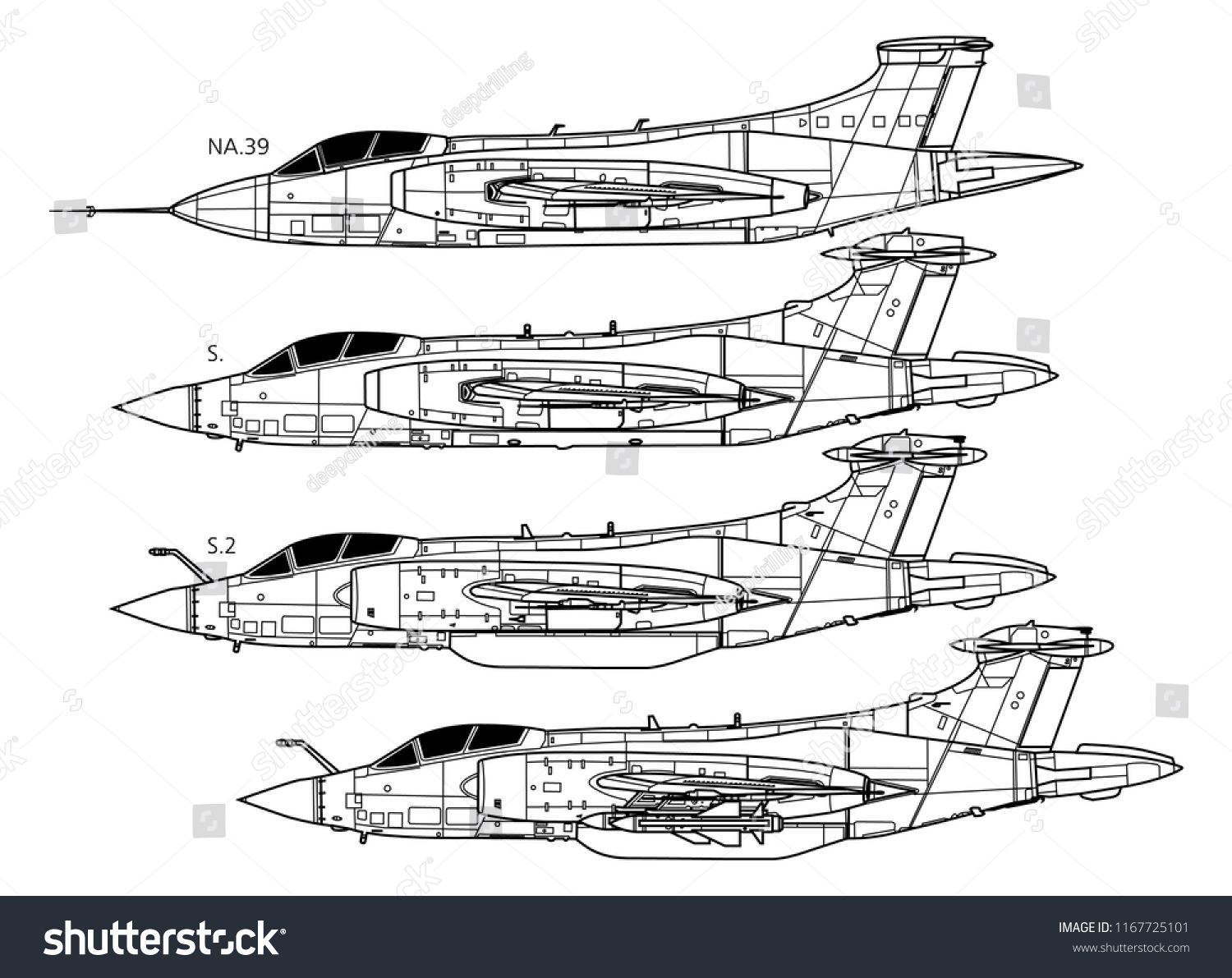
 www.shutterstock.com
www.shutterstock.com

Blackburn Buccaneer Outline Vector Drawing Stock Vector (Royalty Free) 1167725101 | Shutterstock
Find Blackburn Buccaneer Outline Vector Drawing stock images in HD and millions of other royalty-free stock photos, 3D objects, illustrations and vectors in the Shutterstock collection. Thousands of new, high-quality pictures added every day.
Attachments
Last edited:
blackkite
Don't laugh, don't cry, don't even curse, but.....
- Joined
- 31 May 2007
- Messages
- 8,284
- Reaction score
- 5,825
Blackburn Buccaneer
I have wanted an aircraft in this game like this in a long while. The last time I was this excited for one was when the Hawker Hunter was introduced and I truly love that aircraft. I used to go onto the forums everyday from when it was first mentioned on here. I Waited years for the hunter to com...
Attachments
blackkite
Don't laugh, don't cry, don't even curse, but.....
- Joined
- 31 May 2007
- Messages
- 8,284
- Reaction score
- 5,825
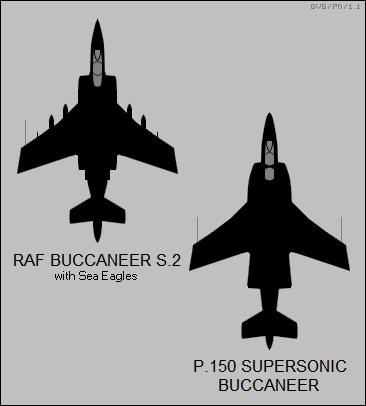
File:Blackburn Buccaneer S.2 and P.150 top-view silhouettes.png - Wikimedia Commons
Attachments
blackkite
Don't laugh, don't cry, don't even curse, but.....
- Joined
- 31 May 2007
- Messages
- 8,284
- Reaction score
- 5,825
From Spitfire to Eurofighter by Roy Boot.
'In 1959 serious attempts had been made to sell the NA.39 in its original configuration to the West German Navy'
Does anyone know what the West German Navy thought of the design?
The West German Navy thought very high about the Buccaneer!
It was the favorite choice for the Navy, but unfortunately politics intervened and the Starfighter was choosen for the Navy ...
I believe I have read somewhere, that the West German Navy had send already personal for evaluation purposes to the UK.
SSgtC
ACCESS: Top Secret
- Joined
- 13 July 2020
- Messages
- 1,126
- Reaction score
- 2,526
Wasn't sure if I should put this here or not, but found this article posted by another member of a USS Lexington Facebook group I'm in. Apparently in 1965, the Lexington was used by the Fleet Air Arm for carrier trials of the Buccaneer S.2 in hot and humid weather. To my knowledge, this would be the only time an Essex class carrier would fly the British jet. Anyway, hope you guys find this as interesting as I did.

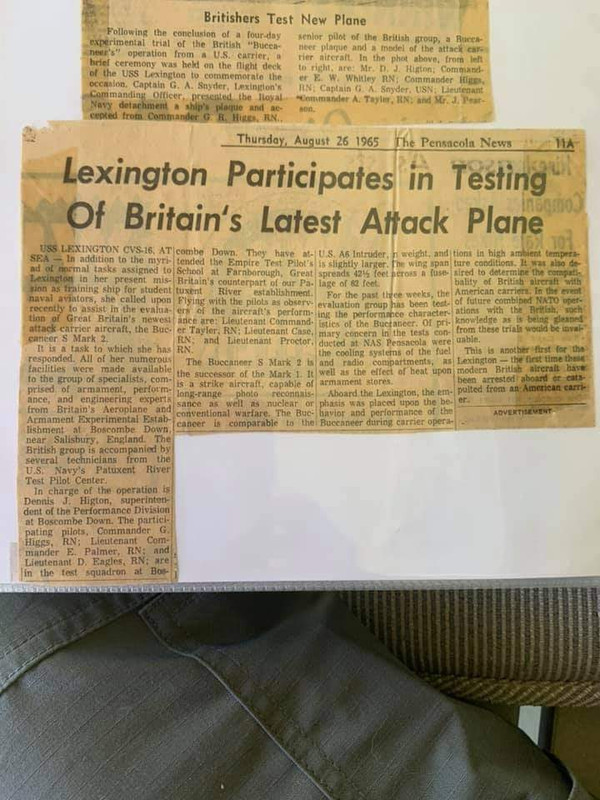
isayyo2
Lurker alert
- Joined
- 24 November 2011
- Messages
- 1,034
- Reaction score
- 1,867
I know a certain story that could greatly benefit from this developmentThe same person I got the article from has also now posted a picture of a Buc on the deck of the Lady Lex. Enjoy.

alejandrogrossi
ACCESS: Secret
- Joined
- 20 September 2019
- Messages
- 218
- Reaction score
- 321
Similar threads
-
-
-
-
M148T - Early Buccaneer and it's rivals
- Started by ChuckAnderson
- Replies: 58
-
Recommendations for definitive book on Blackburn Buccaneer
- Started by nova10
- Replies: 6

